Welcome to the fascinating world of digesting waste! In this article, we'll be taking a closer look at two processes used to break down organic matter: aerobic and anaerobic digestion.
These processes are essential in wastewater treatment and waste management, as they help to reduce the potential environmental impacts of both wastewater and refuse (solid waste). We'll compare and contrast the two processes, and discuss their advantages and disadvantages.
So, if you're interested in learning more about how these processes work and their implications for sustainable wastewater treatment, read on!
To start with, any comparison of Aerobic Digestion and Anaerobic Digestion should first explain that a comparison can be made either on the basis of either:
- microbiology ( the study of microorganisms) or
- respiration systems in man and mammals generally.
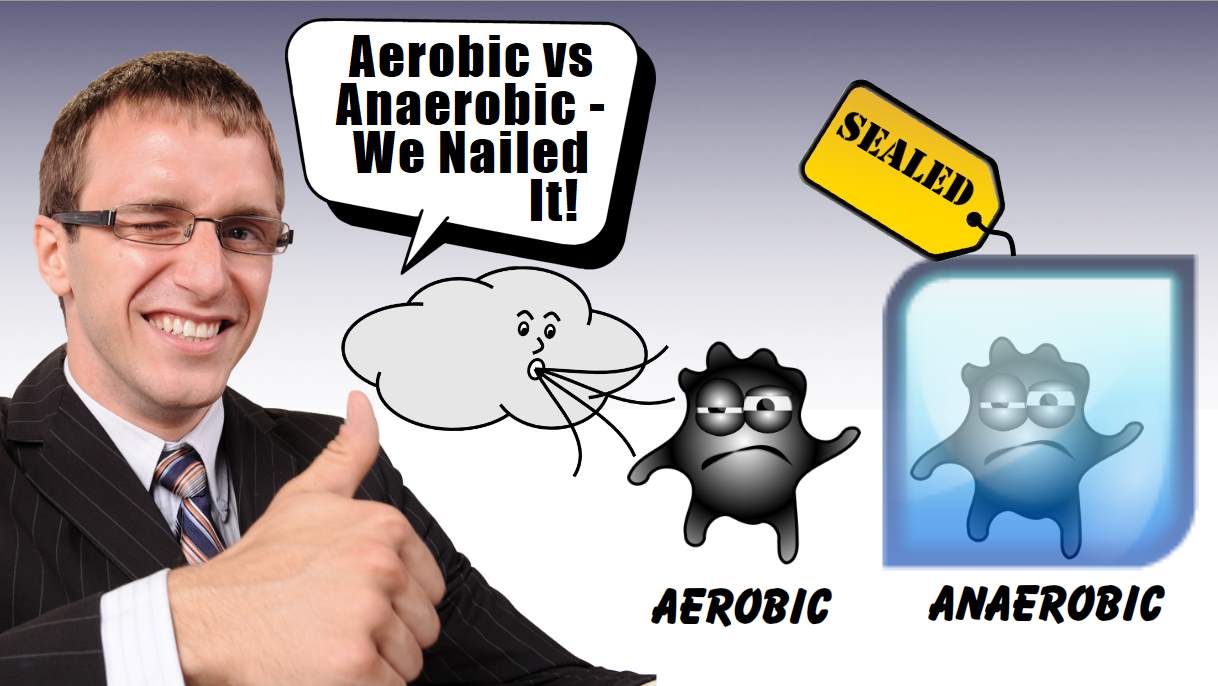 In this article, we compare (1) aerobic digestion with anaerobic digestion (2), in the context of microbiology and wastewater treatment.
In this article, we compare (1) aerobic digestion with anaerobic digestion (2), in the context of microbiology and wastewater treatment.
This amounts to comparing aerobic digestion, hitherto referred to as “composting” with anaerobic digestion, in facilities also known as biogas digesters. (If you seek information on human metabolism we have included a section on that comparison. You will see it if you Scroll Down to the bottom of this page.)
The big advantage of anaerobic digestion is its ability to produce the renewable energy source methane (the main constituent of biogas) which can power the process of anaerobic digestion (AD), whereas aerobic systems always require an input of energy to run them.
Watch our video about this subject below:
Aerobic and Anaerobic Systems in Microbiology
There are 2 major types of systems used for wastewater treatment: aerobic and anaerobic systems. Each has different uses along with pros and cons.
Whether it is aerobic or anaerobic treatment, each treatment system has its place in the world today.
They are very different in the process but both are used to achieve maximum degradation while meeting the strict regulations set by the environmental agencies that regulate what is released into the air, ground, or water.
Uses of Each Compared
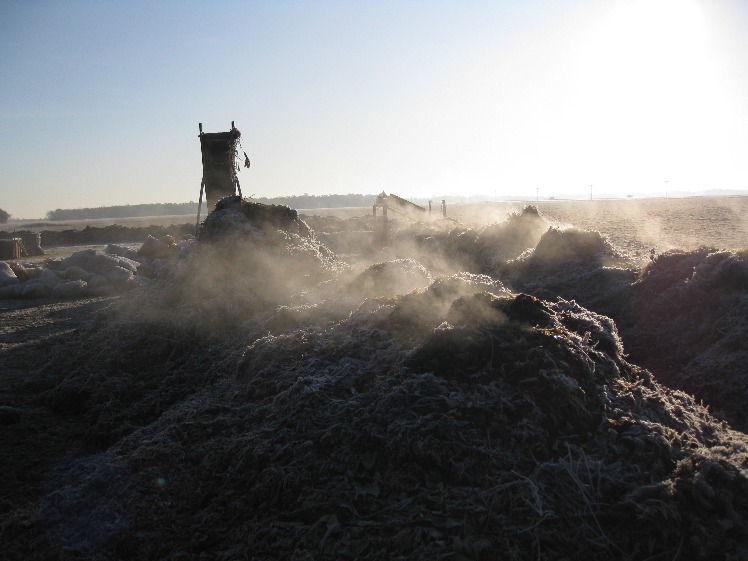
Aerobic digestion is used in compost production and for organic material dissolved in water, aerobic digestion can remove contaminants very effectively, with the exception of high levels of ammonia.
Treating WWTW sludges
Anaerobic digestion is commonly used to treat sludges in the first areas of a wastewater treatment plant. This process is popular because it is able to stabilize the water with little biomass production. Anaerobic treatment occurs in many different stages.
Aerobic digestion is present everywhere that organic matter decomposes in the open air with abundant air circulation.
Anaerobic digestion is around us everywhere the spores are in the air just as are the organisms of aerobic decay. Even in a well-turned compost heap, some parts are likely to lack enough air for aerobic processes and some anaerobic digestion will be taking place.
A good indication of anaerobic digestion is the unpleasant smell, in comparison to the “earthy” but not unpleasant odours of aerobic systems (for example, as in “compost heaps”).
Key microorganisms in Aerobic Digestion and Anaerobic Digestion
The key microorganisms are methane formers and acid formers. The acid formers are microorganisms that create various acids from the sludge. Methane formers convert the acids into methane.
Aerobic wastewater treatment is a process where bacteria utilize oxygen to degrade organic matter (generally quantified as biochemical oxygen demand or BOD) and other pollutants involved in various production systems.
Common types of aerated wastewater systems
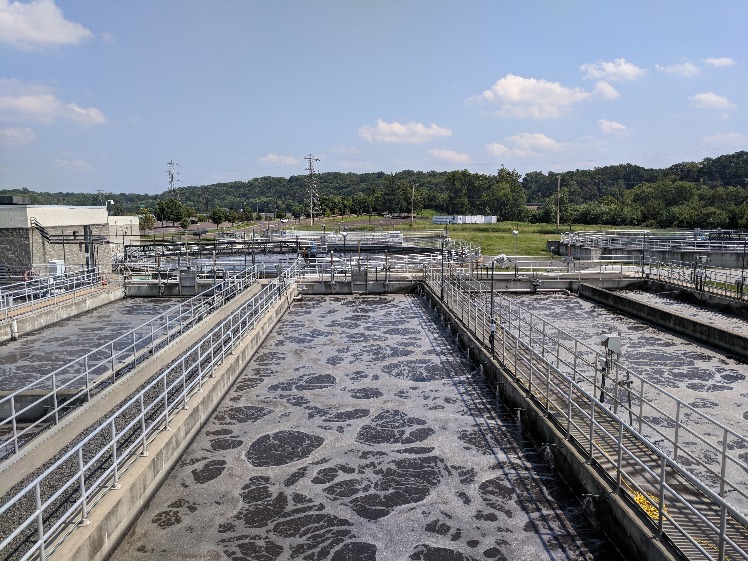
The two most common types of aerated wastewater systems are activated sludge systems and aerated stabilization basins (ASBs). ASBs are commonly found as treatment systems in the pulp and paper industry and are used in some municipalities, as well as other industries. via www.ebsbiowizard.com
What Wikipedia Says About Aerobic Digestion and Anaerobic Digestion
The following is a comparison of aerobic and anaerobic digestion.
In an anaerobic system, there is an absence of gaseous oxygen.
In an anaerobic digester, gaseous oxygen is prevented from entering the system through physical containment in sealed tanks. Anaerobes access oxygen from sources other than the surrounding air. The oxygen source for these microorganisms can be the organic material itself or alternatively may be supplied by inorganic oxides from within the input material.
When the oxygen source in an anaerobic system is derived from the organic material itself, then the ‘intermediate' end products are primarily alcohols, aldehydes, and organic acids plus carbon dioxide.
In an aerobic system, such as composting, the microorganisms access free, gaseous oxygen directly from the surrounding atmosphere. The end products of an aerobic process are primarily carbon dioxide and water which are the stable, oxidized forms of carbon and hydrogen. via en.wikipedia.org
Comparison Table:
Aerobic and Anaerobic Processes in a Wastewater Treatment System
The Initial Aerobic Stage
Aerobic processes use bacteria that require oxygen, so air is circulated throughout the treatment tank. These aerobic bacteria then break down the waste within the wastewater.
Solid wastes that the bacteria are unable to process settle out as sludge. Some aerobic treatment systems include a secondary settling tank to facilitate this settling process.
The final treatment processes prepare the water for return to the environment.
The Final Anaerobic Stage
Anaerobic bacteria (bacteria that live in environments that contain no oxygen) transform organic matter in the wastewater into biogas that contains large amounts of methane gas and carbon dioxide.
Anaerobic digestion is, however, not always the second process after aerobic though. It can be used less commonly as a pre-treatment prior to aerobic municipal wastewater treatment. via greentumble.com
What is the Difference Between Aerobic and Anaerobic
1. For Pupils of Human Metabolism?
 What does aerobic mean to fitness fans? Aerobic is an adjective.
What does aerobic mean to fitness fans? Aerobic is an adjective.
In biology, aerobic means using oxygen.
“Aerobic organisms can only survive in an oxygen-rich environment,” said the biology professor. One way to generate energy is through an aerobic process.
Aerobic can also refer to a type of exercise that stimulates increased breathing.
Though it seems counter-intuitive, there is such a thing as anaerobic exercise. Some very intense activities involve a muscular activity that produces energy without consuming oxygen.
For more information on this type of exercise, consult a fitness trainer.
2. For Pupils of Cellular Microbiology
Some microorganisms are capable of anaerobic cellular respiration, which means they can survive in very harsh conditions. A crucial part of the nitrogen cycle depends on anaerobic microbial processes. But anaerobic digestion, in which food is broken down by microbes inside tall, airtight silos, has a real shot at scaling near densely populated areas.via writingexplained.org
Digestion in Aerobic Wastewater Treatment and Anaerobic Waste Water Treatment.
There are two types of digestion in biological wastewater treatments namely aerobic wastewater treatment and anaerobic wastewater treatment.
Aerobic wastewater treatment is carried out by aerobic microorganisms.
Aerobic microorganisms require oxygen; hence, oxygen is supplied for aerobic wastewater treatment tanks.
Introduction
Anaerobic wastewater treatment is carried out by anaerobic microorganisms.
Thus, the anaerobic wastewater treatment process occurs without an oxygen supply.
The key difference between aerobic and anaerobic wastewater treatment is that in aerobic wastewater treatment, treatment tanks are constantly supplied with oxygen while, in anaerobic wastewater treatment, gaseous oxygen is prevented from entering the system.
Aerobic wastewater treatment
The aerobic wastewater treatment process is governed by aerobic organisms which need oxygen for the breaking process. Aerobic wastewater treatment tanks are constantly supplied with oxygen. It is been done by circulating air through the tanks. For the effective functioning of aerobic organisms, sufficient amounts of oxygen should be present in the aerobic tanks at all times.
Therefore, aeration is properly maintained throughout aerobic treatment.
Anaerobic wastewater treatment
Anaerobic wastewater treatment is a biological treatment process where organisms, especially bacteria, break down organic material in the wastewater in an oxygen absent environment.
Anaerobic digestion is a well-known anaerobic wastewater treatment process. The degradation of organic material is done anaerobically. For the effective anaerobic digestion of organic materials, the entry of air into anaerobic tanks is prevented.
Products of Anaerobic Digestion
During anaerobic digestion, methane and carbon dioxide are produced. Methane is biogas. Hence, the anaerobic digestion process can be used to produce biogas which can be utilized as electricity.
The anaerobic wastewater treatment process occurs via four major steps named:
- hydrolysis,
- acidogenesis,
- acetogenesis, and
- methanogenesis.
 All these steps are governed by anaerobic microorganisms, especially bacteria and archaea.
All these steps are governed by anaerobic microorganisms, especially bacteria and archaea.
Aerobic and anaerobic wastewater treatment processes are biological wastewater treatment processes which involve living organisms.
Complex organic materials are broken down during both processes. Both processes mainly govern by bacteria. Aerobic vs Anaerobic Wastewater Treatment Aerobic wastewater treatment is a biological wastewater treatment process which uses an oxygen-rich environment. via www.differencebetween.com
What is the difference between Aerobic and Anaerobic Fermentation?
Aerobic fermentation: Aerobic fermentation uses oxygen.
Anaerobic fermentation: Anaerobic fermentation does not use oxygen.
Anaerobic fermentation: Anaerobic fermentation does not produce ATP molecules.
Aerobic Anaerobic fermentation and Anaerobic fermentation are both decomposition methods.
Anaerobic fermentation: Anaerobic fermentation has no glycolysis or other stages.
Aerobic fermentation: Aerobic fermentation does not produce CH4.
Anaerobic fermentation: Anaerobic fermentation produces CH4. via www.differencebetween.com
Chemical Formula
In general, there are two ways to stabilize organic matter in nature:
- Composting: decomposes waste aerobically into CO2 water and a humic fraction; some carbon storage also occurs in the residual compost
- Anaerobic Digestion: anaerobic digestion produces biogas (CH4 + CO2 ) and biosolids.
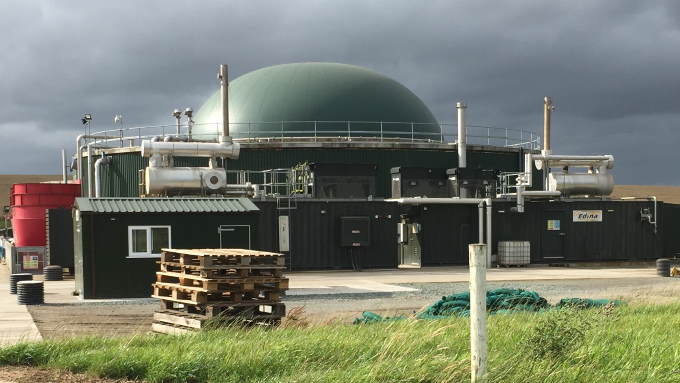
Anaerobic digestion is particularly appropriate for wet wastes while composting is often appropriate for drier feedstocks.
The two methods form part of the biological digestion of waste. via mechanical.uonbi.ac.ke
Aerobic and Anaerobic Systems in the Human Metabolic Processes
Aerobic respiration, a process that uses oxygen, and anaerobic respiration, a process that doesn't use oxygen, are two forms of cellular respiration. Although some cells may engage in just one type of respiration, most cells use both types, depending on an organism's needs.
Cellular respiration also occurs outside of macro-organisms, as chemical processes — for example, in fermentation. In general, respiration is used to eliminate waste products and generate energy.
Aerobic processes in cellular respiration can only occur if oxygen is present. When a cell needs to release energy, the cytoplasm (a substance between a cell's nucleus and its membrane) and mitochondria (organelles in the cytoplasm that help with metabolic processes) initiate chemical exchanges that launch the breakdown of glucose.
This sugar is carried through the blood and stored in the body as a fast source of energy. The breakdown of glucose into adenosine triphosphate (ATP) releases carbon dioxide (CO2), a byproduct that needs to be removed from the body.
In plants, the energy-releasing process of photosynthesis uses CO2 and releases oxygen as its byproduct. via www.diffen.com
Conclusion
The two process types of aerobic and anaerobic digestion offer different advantages, making them both valuable processes in waste management.
Aerobic digestion improves the quality of biodegradable waste but does not produce clean energy and energy is expended to achieve it. While anaerobic digestion produces biogas energy and other valuable by-products.
Depending on the type of waste and the goal of the process, either aerobic or anaerobic digestion may be the best choice. By understanding the differences between the two, we can make smarter decisions when it comes to managing our waste.
[First published August 2019. Updated January 2023.]

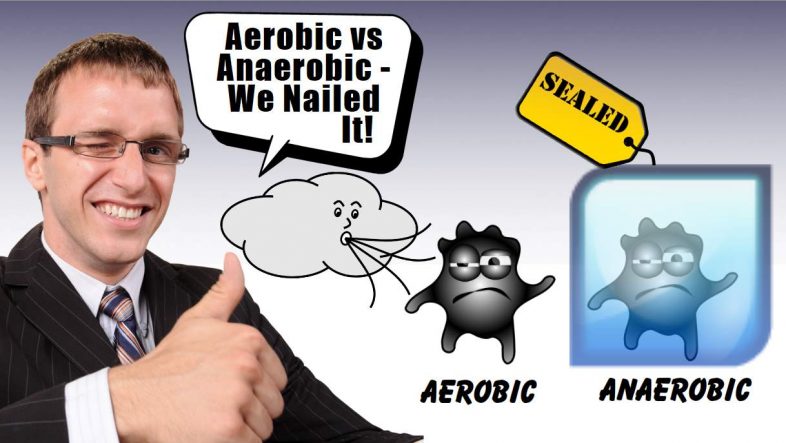
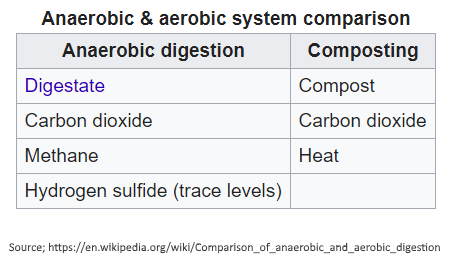
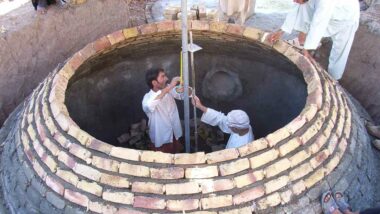


I like the helpful info youu provide in your article. I did not know that aerobic digestion was the same as composting, and of course I knew the differences when you sais that. But, still helps.
Aerobic Digestion and Anaerobic Digestion I thought this was a weird title.
I became clearer as I read this, but if aerobic digestion is composting, anaerobic digestion is fermentation?
Nice arguments. Aerobic uses a lot of energy and emits a lot of greenhouse gas as a result. Until now it was considered acceptable that aerobic digestion consumes higher net energy to operate and produces more excess solids than anaerobic digestion.
For how much longer will it be said that creating that much C02 emission from aerobic is justified?
Greetings! Very helpful comparison in this particular article!
It is the little changes which the public does not see which will make the greatest changes.
Hope you get the problem of the cost resolved soon. Do this and I buy.
Thanks.
There it is – Anaerobic Digestion, which I’ve been looking for. Here it is present in this blog, many thanks to the website’s administrator for putting this together.
In comparison to other people, your style is really distinct. I’ve been reading yor stff.
But, is the aerobic way green or not?
One of the main points missed here is that biogas production contributes more to global warming. Methane is a greenhouse gas. If it is captured and burned to produce energy it still releases CO2 in to the atmosphere. It is not considered a green source of energy. This concept is It’s more of an open system that promotes the release of GHG and contributes to global warming.
Aerobic composting while releasing some CO2 during the composting process keeps carbon sequestered in the soil where it belongs and can be used to produce crops. Plants grown on compost sequester more CO2, we eat them , digest, and poop out more compostable material and the carbon cycle is completed. It is more of a closed system.
The promotion of Biogas as a “renewable, clean” source of energy is a myth.
I can see that you have given this thought. However, I think that when considering the balance, the effect of the biogas when used, replacing the need for fossil fuel use is something that needs to be allowed for.
Also, anaerobic digestion in effect only converts 50% of the carbon into methane, and what is left is mostly the woody material/ fibre and that is in effect composted and generally placed on the land in just the same way as aerobic composting.
Aerobic composting has its place for woody materials, but it also has its own energy demand and that’s usually in diesel fuel to turn the compost piles in commercial composting facilities.
Also, the relative merits of aerobic composting and anaerobic composting have been assessed by organisations that have no bias toward either process, who came to the conclusion we make in this article.